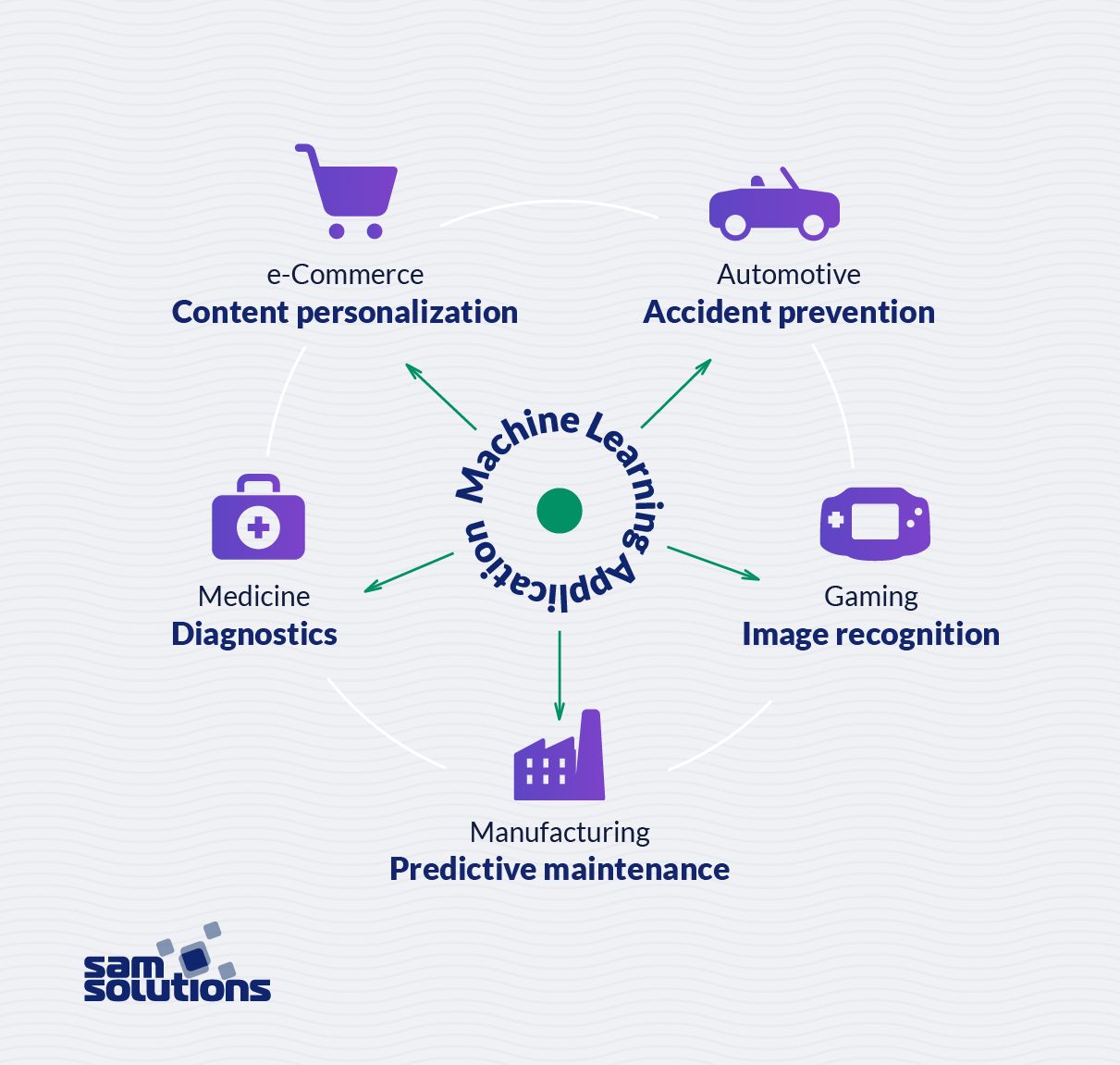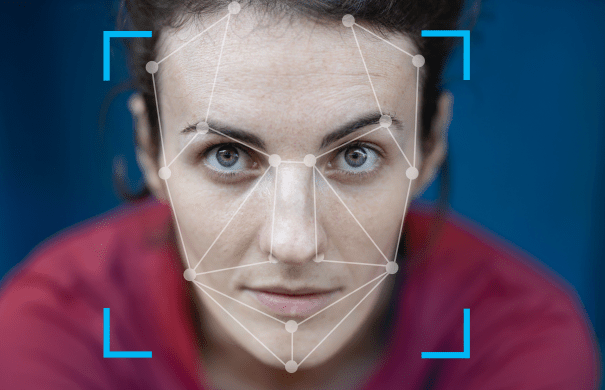Way back in 1959, when computing era has just begun, Arthur Samuel coined the term “machine learning.” As Gartner’s expert put it: “Ten years ago, we struggled to find ten machine learning-based business applications. Now we struggle to find 10 that don’t use it.” A great deal has changed since then, but this technique is now fully involved in household and business operations, and a growing number of companies come to realize the importance of machine learning in business. Let’s explore the business benefits of machine learning for small businesses, large enterprises and startups.
On-Time Predictive Maintenance
Proper maintenance of machinery and equipment is the prerequisite of efficient business operations for manufacturing companies. It not only increases the production output but also helps prevent downtime- and repair-related expenses. For companies of this type, machine learning provides an opportunity to predict possible failures and take proactive measures.
How can they achieve it? Specific algorithms observe the performance of mechanisms, gather parameters that characterize the normal operation state, the “off” state and abnormalities in behavior. Based on this information, they can detect aberrations that signal that a piece of equipment is getting out of order. Then, service personnel receives alerts about the situation, which allows them to take well-timed failure prevention measures.
For example, to help prevent motor outage, the SaM Solutions team has created a predictive maintenance system that analyzes the state of a board motor. The system collects motor performance parameters and transmits them to Amazon Web Services. Then, based on machine learning algorithms, it identifies the motor state based on Amazon Greengrass and Amazon Lambda technologies.
Accurate Diagnostics
Medicine is another case of the use of machine learning in business. In 2016, the World Health Organization revealed in its research, “Diagnostic Errors: Technical Series on Safer Primary Care,” that by the human factor is the primary reason for wrong diagnoses. In particular, failure and delay in diagnosis, misdiagnosis and failure to arrange an appropriate test can cause 88% of the cases, which brings about grave ethical and financial outcomes.
Machine learning can mitigate the problem not only by streamlining data analysis and processing larger amounts of information than humans but also by the higher quality of the analysis. Smart algorithms rely on statistical data, which allows them to detect dependencies more accurately, thereby enabling the establishment of the correct diagnosis.
It means that diagnosing does not depend on doctors’ qualifications, the amount of attention they pay to a patient and other factors that may influence the quality of their judgement. Machine-enabled mechanisms are not prone to factors of the kind, while they have access to a much wider data pool, which contributes to better decision-making.
Customer Satisfaction
Market segmentation and product recommendation is another example of how machine learning impacts on business. Its capability to learn allowed Netflix to save $1 billion annually, owing it to better content personalization. Companies that follow the Netflix example can also gain higher user engagement and provide their customers with more suitable services and products.
Special algorithms send different offerings to various market segments, which allows businesses to add value to their marketing campaigns. Also, with this method, companies can make proper product recommendations, instead of random advertisements that most frequently miss the mark.
In such a manner, machine learning allows a company’s message to reach the goal and boost online sales. Moreover, selling to the target audience and its maintenance will come at a lower price than that for occasional customers.

Effective Financial Analytics
The machinery’s capability to learn has also spread to insurance. According to Ernst and Young’s executive summary on “The Future of Underwriting,” insurance can get the most out of machine learning through ongoing data evaluation. It helps detect various anomalies and thus predict and prevent fraud.
Another use case that is based on the machines’ capability to foresee fraud is loans. Algorithms can check the loan applicant’s information and, based on it, determine if there is the possibility that the person is likely to fail paying back the loan.
Also, smart algorithms that have access to historical data enable the development of precise financial rules and models. They can indicate whether a transaction has the potential to be fraudulent or not, which is essential for quantitative trading and portfolio management.
Accident Prevention
This technique helps businesses prevent accidents that may happen in the workplace. For example, alerting systems detect deviations from normal environmental characteristics, such as air pollution or the release of hazardous substances, and prevent intoxication and explosions. Another example is truck driver alerting that signals about possible crash situations.
Smooth Image Recognition
Image recognition market is expected to reach almost $39 billion by 2021, which is 2.5 times the current market size. The reason for its growing expansion is that an increasing number of industries aim to gain the benefits of machine-enabled recognition of images.
Probably, one of the most mainstream use cases of this functionality is QR scanners that recognize codes and bring them into correlation with objects, places, logos or people. Healthcare, commerce, gaming and automobile manufacturing also benefit from image recognition.
Read also: Microsoft Azure Cognitive Services: Why Is It a Leader on the Cognitive Computing Market?
Enhanced Security
While an increasing number of companies are experiencing cyber-attacks, machine learning algorithms may also help detect possible vulnerabilities and threats. How can machine learning be used in business security? This technology enables smart mechanisms that detect deviations from the baseline traffic characteristics, user behavior patterns and other parameters.
Businesses can also get the most out of these algorithms to address spamming. Spam mailings not only contaminate corporate networks with oceans of unwanted messages, but can also come laden with malicious attachments or links that usually cause cyber-attacks. Machine-learning-based solutions filter the inbound traffic and detect suspicious behavior that is typical for spam and phishing.
Streamlined Business Processes
Modern employees spend a considerable amount of their office hours on data collection. Machine learning allows companies to reduce the time that is required for data collection and entry, as it can be performed in an automated manner. Moreover, process digitalization helps prevent misprints, errors in data and other errors that usually arise due to the human factor.
Should You Care About the Benefits of Machine Learning in Business?
These use patterns of machine learning may sound quite futuristic. However, this technique is coming into general use and an increasing number of companies are adopting it and integrating it into their strategies. At the same time, a lot of businesses still remain wary of the reliance on machines.
So, it is up to each specific company to incorporate machine learning or opt out. But if you decide on it, you can be sure that SaM Solutions will use the industry best practices to help you fully enjoy the advantages of machine learning for business and to minimize risk. We transform the pros and cons of machine learning for business into robust software solutions that add value to operations and improve company performance.



























 5 Reasons Why Your Business Needs a Mobile eCommerce Application
5 Reasons Why Your Business Needs a Mobile eCommerce Application Using Salesforce to Improve Your Sales Pipeline: Five Tips
Using Salesforce to Improve Your Sales Pipeline: Five Tips Cross-Platform Mobile Development: Five Best Frameworks
Cross-Platform Mobile Development: Five Best Frameworks How to Develop Custom Accounting Software
How to Develop Custom Accounting Software 10 Best Web Development Frameworks in 2024
10 Best Web Development Frameworks in 2024












 Top 30 Ecommerce Tools to Elevate Your Business in 2024
Top 30 Ecommerce Tools to Elevate Your Business in 2024 5 Best Tools to Improve Embedded Software Testing
5 Best Tools to Improve Embedded Software Testing Why React and Node.js Are the Top Technologies for Creating High-Performance Web Apps in 2024
Why React and Node.js Are the Top Technologies for Creating High-Performance Web Apps in 2024 10 Best IoT Platforms for 2024
10 Best IoT Platforms for 2024
This is a wonderful blog! Really liked the part about the usefulness of the technology. Thank you for writing such an article.
Thanks for sharing this type of depth post.